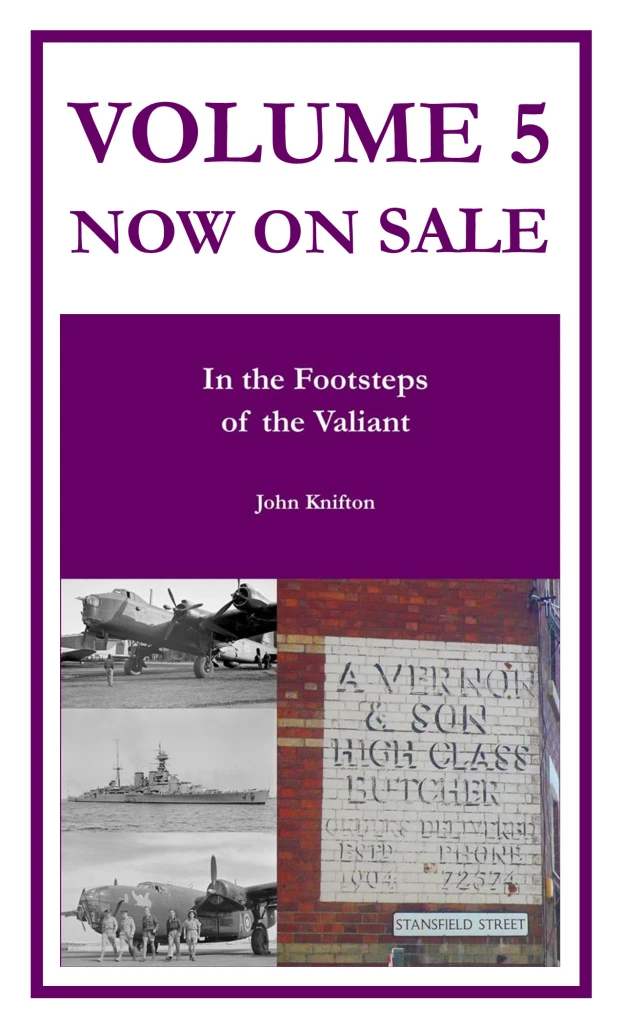Last time we were looking at how the English film star, Leslie Howard, was killed when the aircraft he was in, a DC-3 Dakota, was shot down over the Bay of Biscay, by the Luftwaffe.
That Dakota, though, was actually completely unarmed and it was no match whatsoever for a single Junkers Ju88, let alone a group of eight of them. As well as being unarmed, it was also registered in a neutral country (the Netherlands) and flying from a neutral country (Portugal) to England.
Nobody took very much notice of this at the time, but, because of these seemingly innocuous details, the entire episode therefore crossed the line of human decency and became a war crime. Here’s the DC-3 in question. Note the Dutch flag, with the prominent orange:
In the immediate aftermath of the DC-3’s failure to arrive in Bristol, the British sent out a Short Sunderland GR3 flying boat to look for it on the following day (June 2nd 1943):
The aircraft carried the serial number EJ134 and it was piloted by the brave Australians of 461 Squadron. The crew was James (Jim) Collier Amiss (Second Pilot), Wilbur James Dowling (First Pilot), Alfred Eric Fuller (First Wireless Operator / Air Gunner), Ray Marston Goode (Tail Gunner), Albert Lane (Third Wireless Operator / Air Gunner), Edward Charles Ernest Miles (First Flight Engineer), Harold Arthur Miller (Second Wireless Operator / Air Gunner), Kenneth McDonald Simpson(Navigator), Philip Kelvin Turner (Second Flight Engineer), Colin Braidwood Walker (Captain) and Louis Stanley Watson (Rigger).
The flying boat found nothing whatsoever on the surface of the sea, no wreckage at all. What they did find though, were surely the very same eight Ju88C-6s that Leslie Howard had already met, at more or less the very same place where they had met them. Sunderland EJ134 and its crew then won their place in aviation legend. In a prolonged battle, the flying boat lost one engine and its tail turret. Messrs Dowling, Goode, Miller, Simpson and Walker were all injured and poor Ted Miles, one of the two side gunners and just 27 years old, was killed. The battling Aussies did manage, though, to shoot down three of the eight German fighters:
Of the other five, only two made it all the way back to Bordeaux. The other three were presumed to have crashed into the waves as they were never heard of again. Six out of eight shot down. That should teach them not to attack unarmed airliners flying from neutral countries. The now shot to pieces and extremely battered Sunderland EJ134 made it the 350 miles back to western Cornwall, not to Penzance, but only as far as a beach on the south Cornish coast, at Praa Sands:
The fierce Atlantic waves, however, ultimately smashed it to smithereens:
Young Ted Miles, just 27 years old, was buried at Pembroke Dock Military Cemetery joining 72 more casualties, 40 from World War I and 32 from World War II, including five Australians. On his grave his parents had written:
“There is no death: our stars go down to rise upon some fairer shore”.
The family came from Brixton in London. Ted’s parents were Edward Charles Miles and Florence Mabel Miles. His young wife was Frances Margaret Miles.
Around eight weeks later, virtually the same 461 Squadron crew was lost without trace out on patrol over the Bay of Biscay on Friday, August 13th 1943 in a Short Sunderland Mk III, serial number DV968. The last message that they transmitted was that they were being attacked by six Ju88s. The victory was claimed by Leutnant Artur Schröder so this particular incident may not have been exclusively carried out by members of the original eight, especially as Schröder was in 13 / KG40, not V/KG 40:
The men from EJ134 who were killed in DV968 were Wilbur James Dowling (34), Alfred Eric Fuller (20), Ray Marston Goode (34), Albert Lane (27), Harold Arthur Miller (23), Kenneth McDonald Simpson (28), Philip Kelvin Turner (26) and Louis Stanley Watson (25). The new members of the crew who died were David Taylor Galt (28), James Charles Grainger (24) and Charles Douglas Leslie (Les) Longson (20). Not flying that day were James (Jim) Collier Amiss and Colin Braidwood Walker from the original “Flying Porcupine”, Sunderland EJ134. Both men would survive the war and go home to Australia. Hopefully, they lived out very long and happy lives. Perhaps they followed a sports team:
Or perhaps they preferred the beach:













Thanks, John, for this post about events that inexorably being lost from our collective memory.
My pleasure, but you are right ,of course. In the twenty years after the war, the film industry and the printed word kept all of these acts of heroism in the memories of a huge proportion of the population, but now, seventy or eighty year son, they are slowly slipping into a dusty drawer marked “History”.
More important history, John
Yes, it is, Derrick. I particularly feel that in an age where social media has made every young person desperately lacking in self confidence, it is important for them to know that you can fight off bullies, whether they are in enemy aircraft or hiding behind anonymity on the internet.
We lost so many good men, that’s why I feel it is important that we go over this history time and time again, to not only teach the up-and-coming generations, but for us to remember.
Great work, John!
Thank you so much for your kind words. I knew this story as a boy from a comic called “Wizard” which had the battered Sunderland on the front page in full colour and which recounted the story in detail inside the comic. Nowadays, heroes are Norse gods or mutants, individuals who have never existed and who never will exist.
I have always felt that statues and, if that is too expensive, street names and especially the names of schools have a great role to play here. I am sure that all the children at the Ian Bazalgette School in Calgary, Canada, and at the John Nettleton Junior School in Harare in Zimbabwe know exactly who their two schools are named after.
You’ve made an excellent point here. People don’t seem to question WHY are heroes today fictional characters?
Wonderful work, John! Very interesting.
Thank you, Cindy. It’s certainly a tale of great courage and determination that deserves not to be forgotten.
Your post reminded me how I recently read a novel about what it was like living in the Netherlands during the occupation. It was both horrifying and fascinating. Thank you for your ceaseless work you do documenting the events of WWII. We cannot forget. We must not forget.
Thank you, Amy. You are very kind. The Dutch were exceptionally brave during World War II and they continue to remember what the Allies did to help them.
Sadly, as new roads and foundations for buildings are dug out nowadays, it is by no means unusual to discover old aircraft which sometimes have the crew still in them. The Dutch authorities always make huge efforts to trace who the men are, do they have any surviving family, and so on? Military funerals are held and hundreds of local people will turn out to support them.
A very interesting story from start to finish John. The good old Sunderland was a real beast and quite formidable for its size, especially in the hands of a good crew. I suspect it saw off many a villain thus playing a major part in the Atlantic war.
Thank you, I’m glad you enjoyed the story which is not quite over yet! At least one war crime to come!
Between them, the Sunderland and the Catalina, equipped with all the fancy new technology the boffins kept giving them, do seem to have been the primary agents in winning the Battle of the Atlantic.
The Germans did their share, too. I am currently watching a series called “War Factories” which tells the tale of how the two sides manufactured the weapons of war that they needed. German inefficiency and excessive red tape limited them to a maximum of forty U-boats in the whole Atlantic at any one time. They are really interesting programmes if you ever come across them.
I certainly have caught one or two and have others lined up ready to watch when time permits. It is a good series, very informative and quite an eye opener too!
I’m impressed by the depth of your research. The story reminds us that in the history of war, beneath the broad sweep of campaigns and battles there are the instances of individual endurance and heroism, and loss, which are otherwise so easily overlooked.
Thank you, Chris. What we tend to forget, I feel, is that those “instances of individual endurance and heroism” continue day by day right up to January 17th 2020.
You can get a copy of this book, “21st Century Courage: Stirring Stories of Modern British Heroes” by Mark Felton, for just 16 pence, and it is a very reassuring work which proves that everybody can be courageous when they are pushed, particularly by bullies. The heroes in this book are British, many of them women, many of them members of ethnic minorities, but they were all very much ready to put their lives on the line for our way of life.
We tend to forget that when adverts on TV say that a “hero” is somebody who delivers pizza when it is raining.